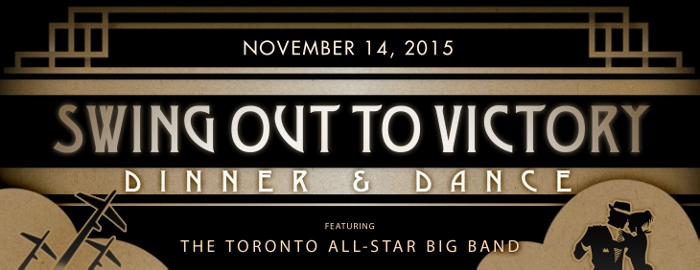This past weekend I attended one of my most FAVORITE events of the Lindy Hop Season-Swing Out To Victory (below is the 2015 invite).
NOTE: The event is back for 2023! November 18th, 2023. Details HERE
This dance is held every year at the Canadian Heritage Warplane Museum just outside of Hamilton, Ontario, Canada.
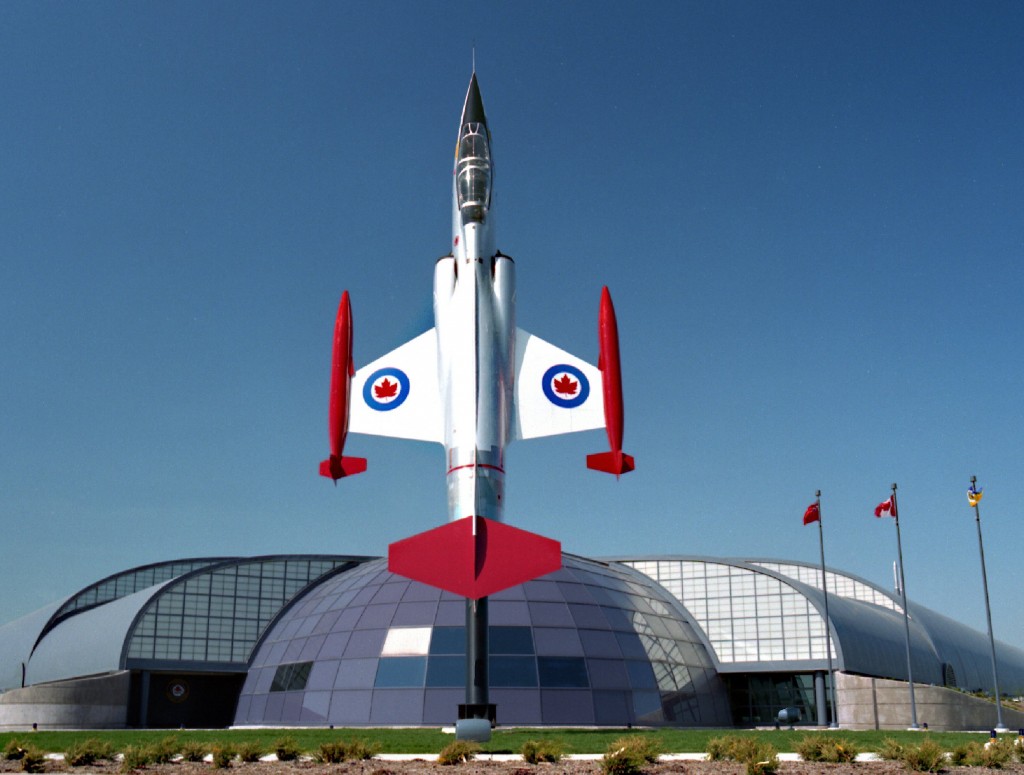
The Event is a marvelous evening of dinner and dance with the superb Toronto All-Star Big Band performing nostalgic tunes from the 1930s and 40s. There is also Swing Dance Lessons, Prizes, Giveaways and even a Best Vintage Dressed Contest (more about that later).
What I love about this event is the atmosphere. I am pretty lucky to be able to dance to a big band on a fairly regular basis if I wanted to so this not the draw for me. The draw is the fact that the Big Band is playing IN an airplane hanger with lots and lots of vintage planes all around it AND the famous Avro Lancaster (last in Canada) is the main focus of the event. Everyone also dresses up in their finest 1940s clothes (and uniforms) to dance the night away and this thrills this vintage loving gal to the bone and just adds that extra something to the evening.
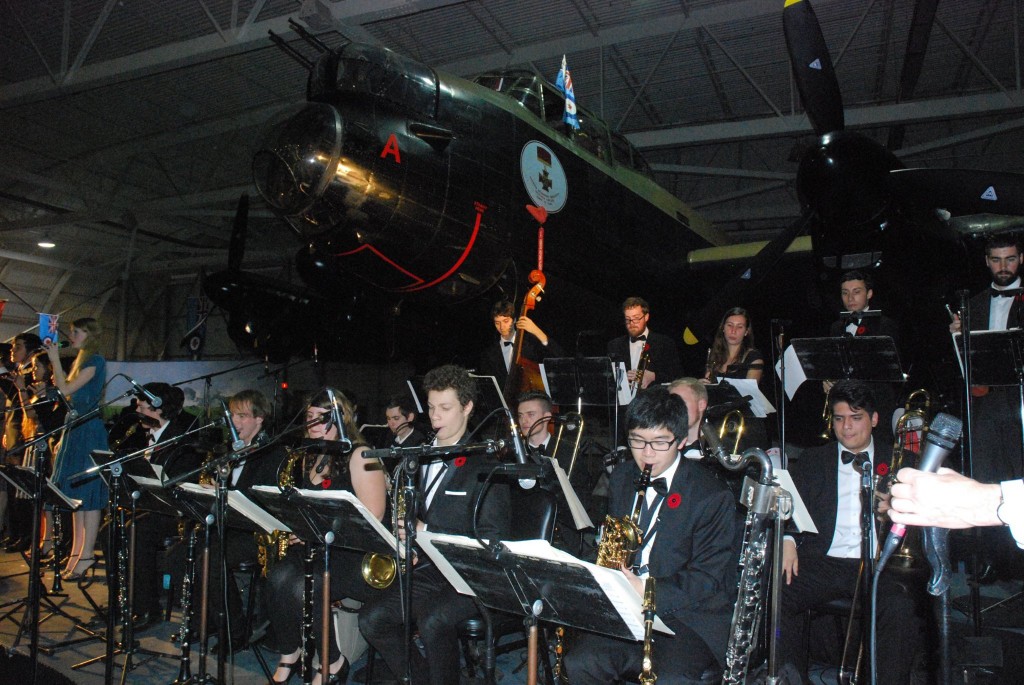
Interesting Fact:
Did you know that the Lancaster pictured above actually took a trip to the UK recently and once there, it embarked on a six-week tour of the United Kingdom with the only other airworthy bomber of its kind, a Lancaster belonging to Britain’s Royal Air Force.
I also had a fellow blogger FROM the UK post pictures of the 2 Lancasters flying over her head. It was so amazing to see the picture and know that one of those planes were from a town close to mine (and that I have seen in person). It made the world feel a bit smaller that day.
After the Lancaster came back to Canada, a gramophone from the UK made the trip back as well and was played to open the event on Saturday (seen below). I absolutely adored this part and thought that it was such a fantastic surprise.

Now let the swing dancing begin!
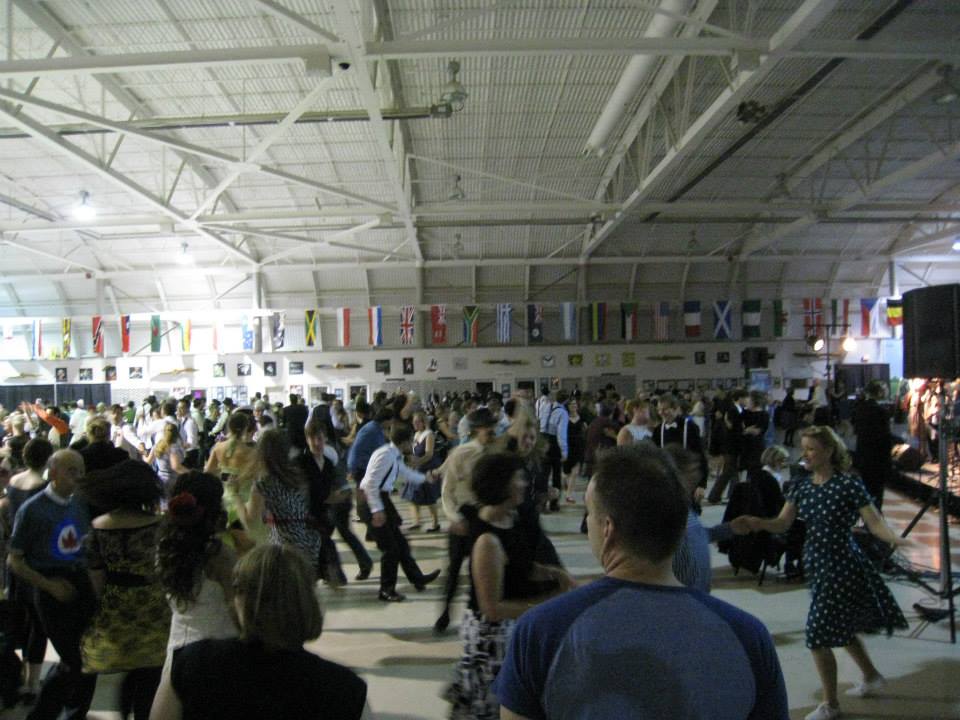
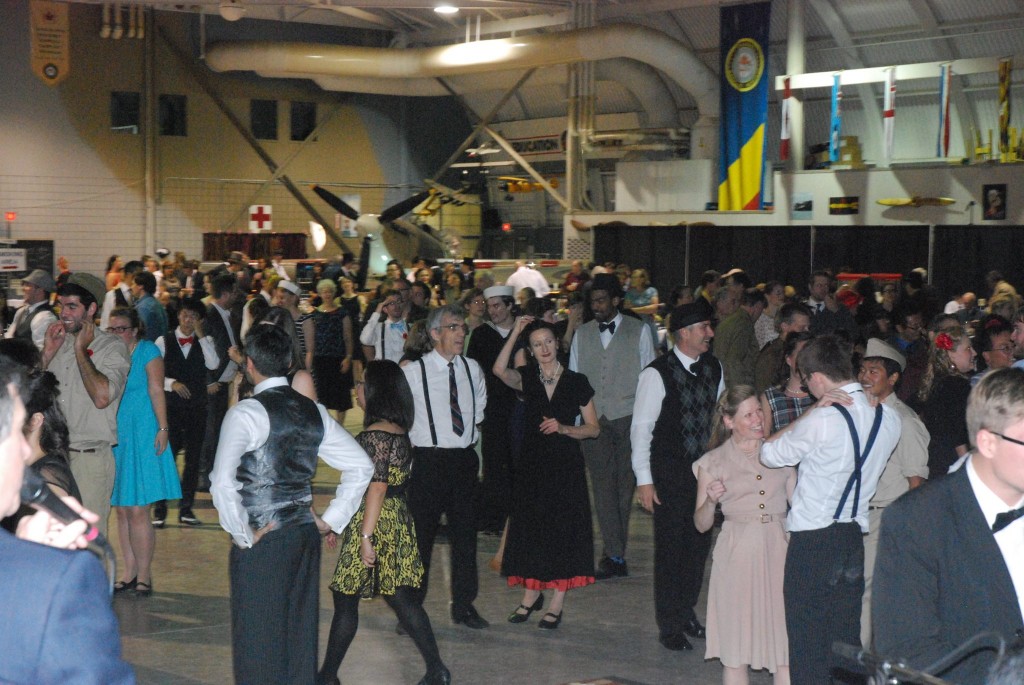
This year I was excited to have some of the ladies from the Toronto Vintage Society along for this adventure. Some of them have even started taking Lindy Hop lessons which has just made me so happy to be able to pass on my love of the dance with more friends. Of course the ladies dressed to the Nine’s (I actually should say 10’s) for the event as you can see below.
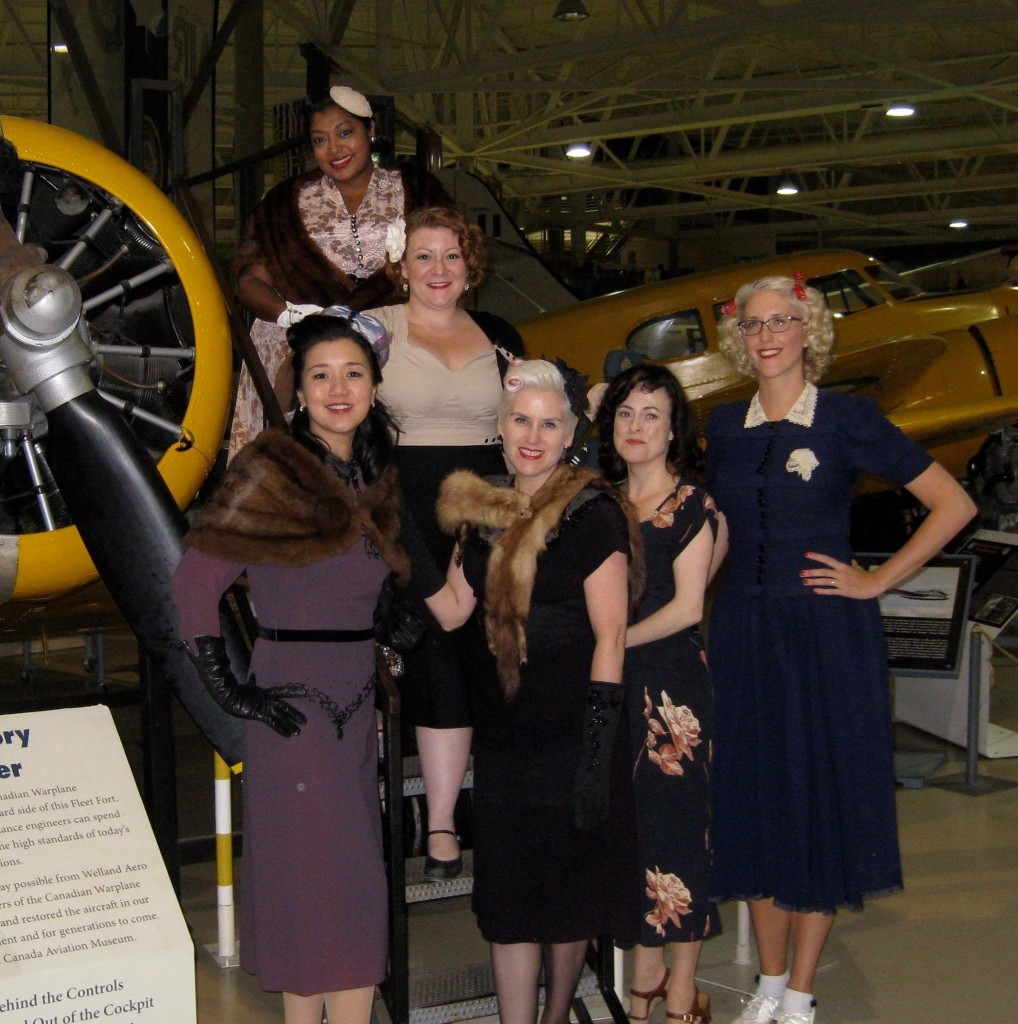
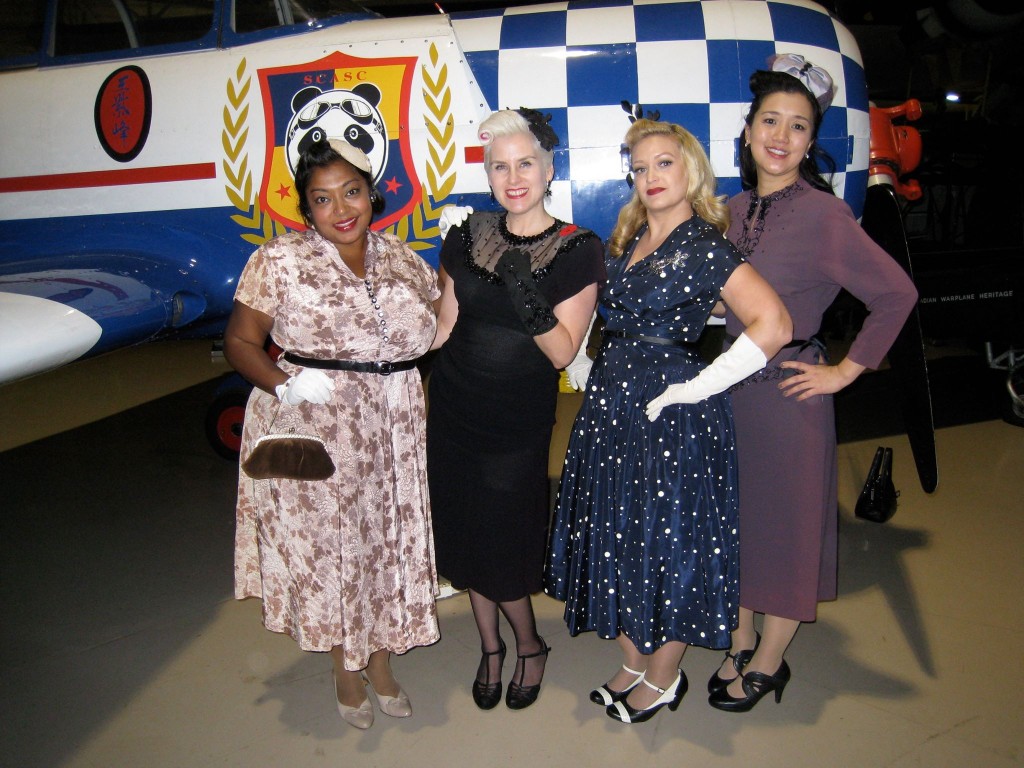
TVS member Joy with a veteran that was at the dance.
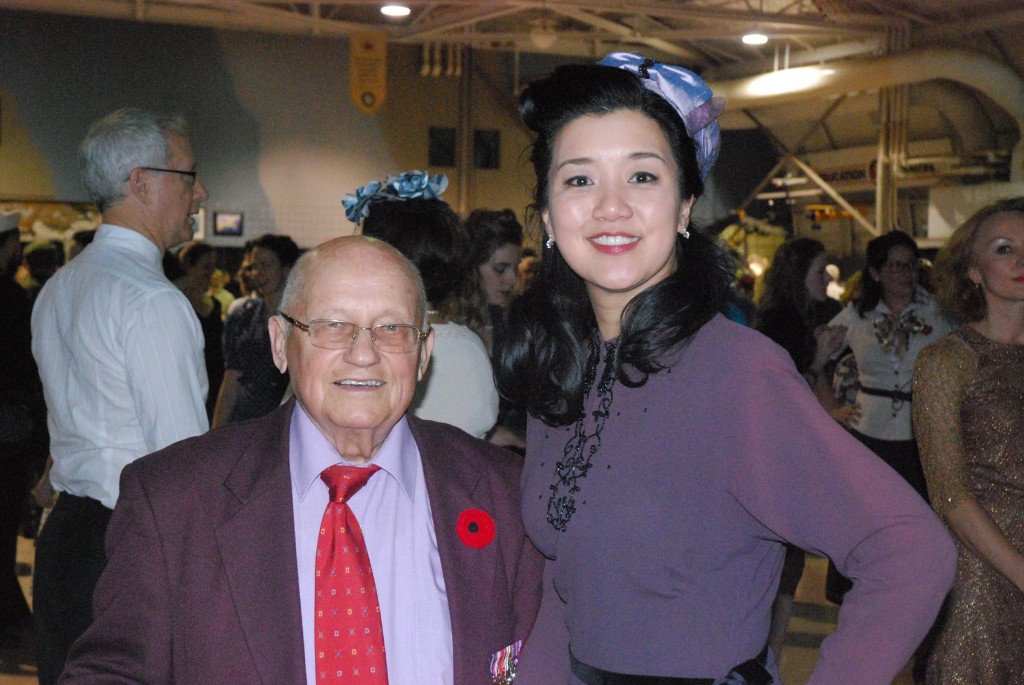
TVS members Irene and Erin with fellow swing dancer (and Rock n Roll dancer) David. LOVE the outfit David!
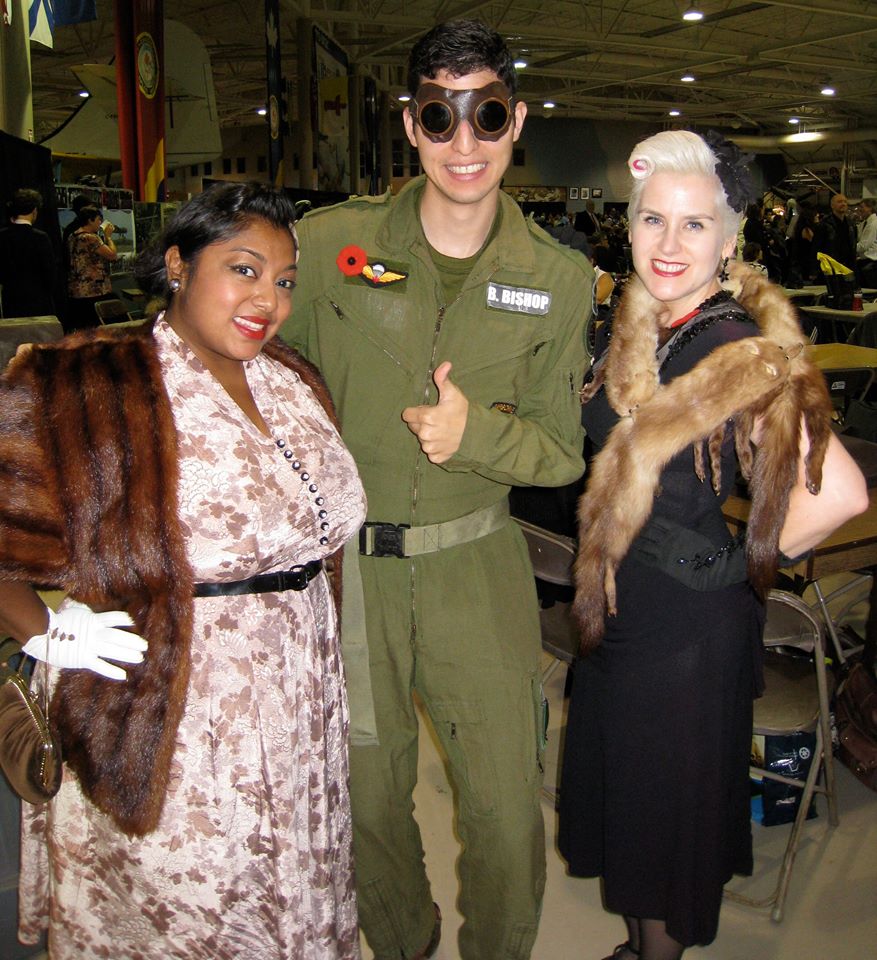
Everyone likes a well dressed Soldier.
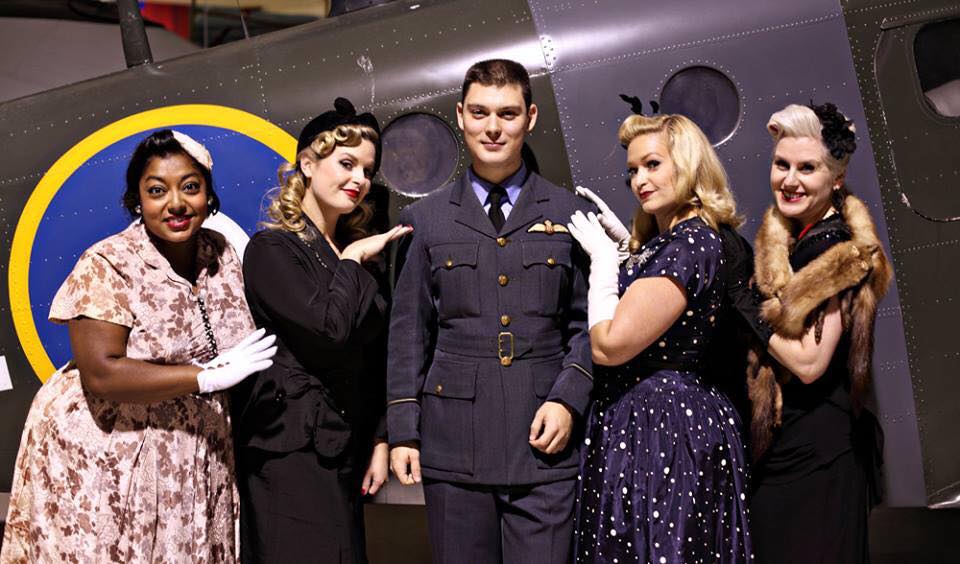
As per last year I was excited to be asked to help with the Best Dressed Contest again with two fantastically dressed friends, Amanda and Erika.
Here we are with our friend Dean who is normally the MC of the evening and a big part of the organizing team but this year he was called away to a wedding so we took this photo-a traditional “Dean Sandwich”.
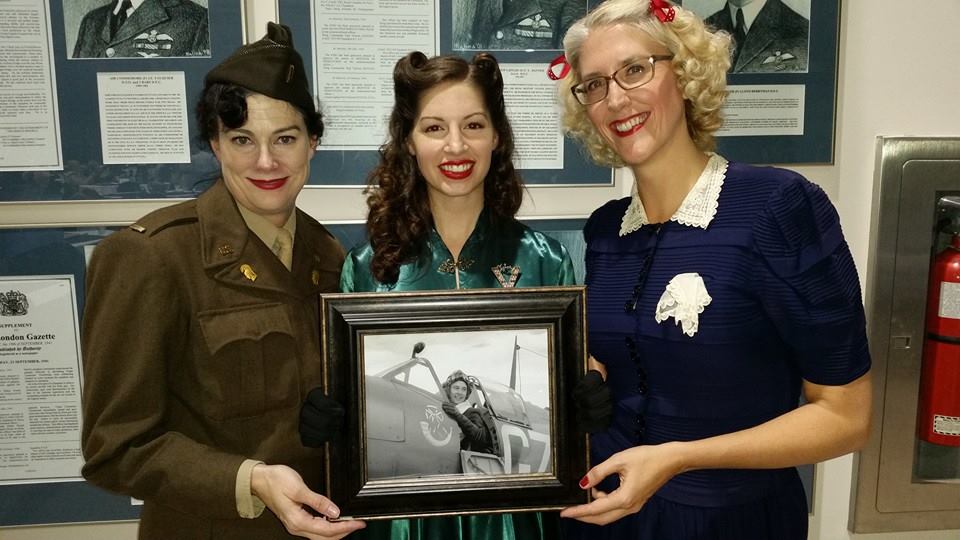
Everyone was dressed so GOOD! and I really had a hard time choosing who I wanted to send to the finals, but I think the team did well in the end (sorry for the poor picture there are no really clear photos posted yet of the finalists).
What was exciting was that one of the members of TVS made the finals-Irene of Petite Plus, Meow! and she ended up with second place! YAY Congrats Irene!
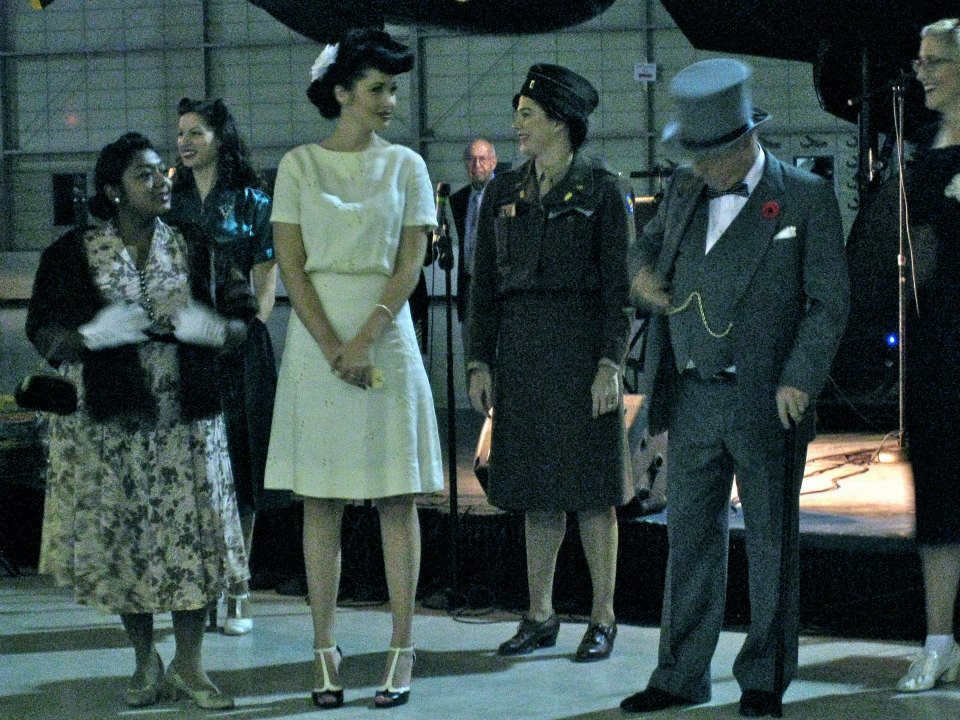
My choice (Churchill look alike) came in first place and as you can see below I am very very VERY excited about this. hahaha!
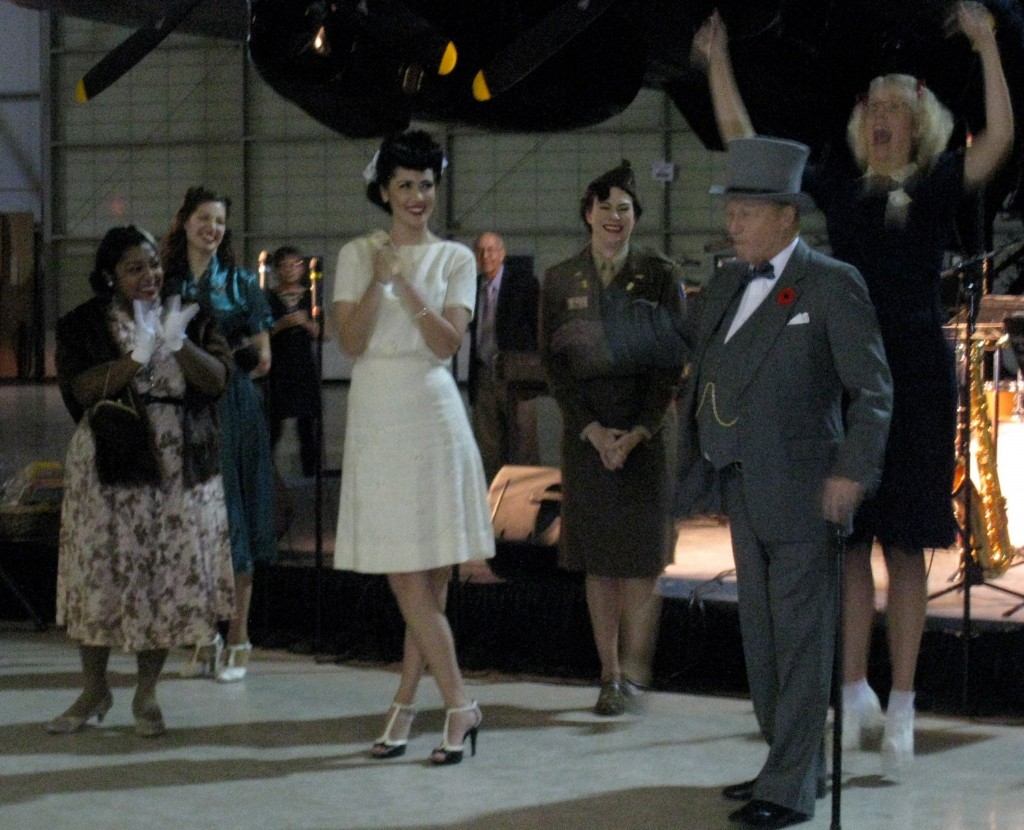
After all the prizes and performances were done I was able to get some good quality Lindy Hop time in.
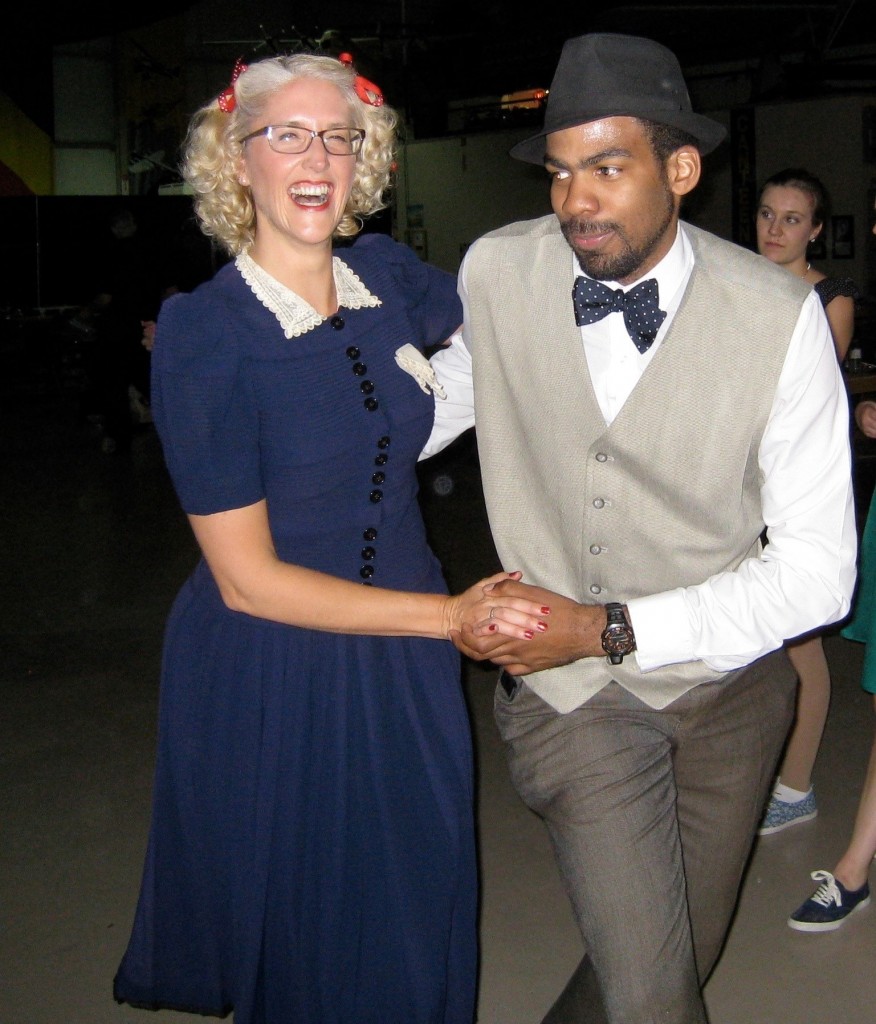
Outfit Note: My 1940s vintage swing dress was purchased at the Pop Up Store-Jack Lux for only $20. It was such a find and it looked great on the dance floor as well.
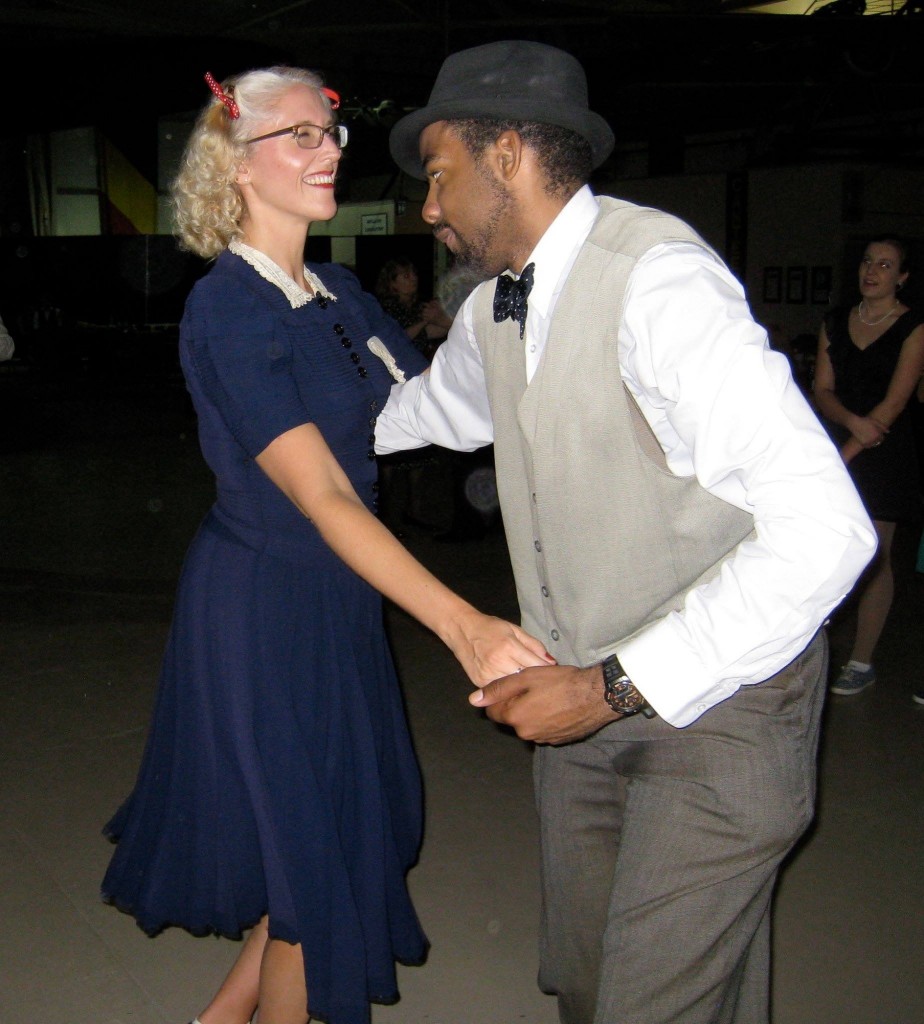
I also got to have a few minutes with my very handsome husband to snap this photo.
And another photo with friends to end a wonderful evening.
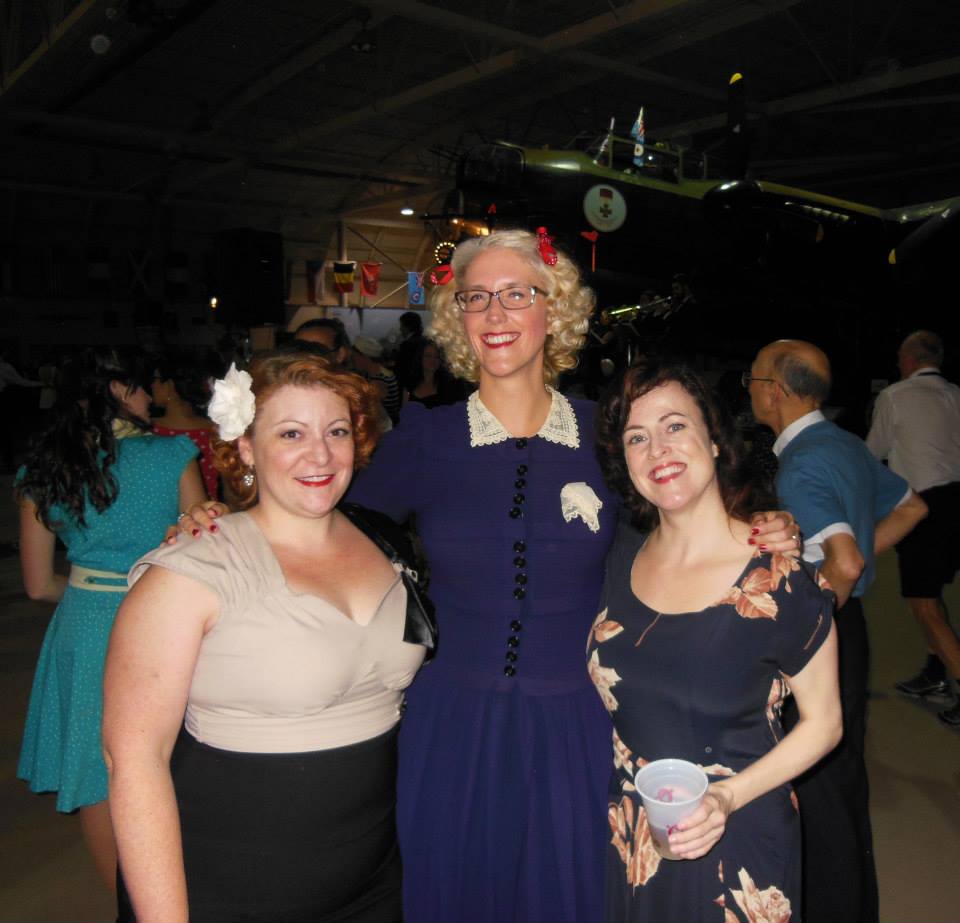
Well that is it friends another Swing Out To Victory in the books. Hope you enjoyed this little post and if you are ever in Toronto and want to go to a dance please check out Toronto Lindy Hop as we have a calendar with all the events (and we have lots of dancing) for your dancing pleasure.
Further Reading:
- Swing Dance & The Big Band Era – Archived blog posts from the Vintage Inn Blog
- Ontario Vintage Dance Hall History – Archived blog posts on various dance halls
- Vintage Photo Tuesday-The 1947 Dance Teachers Strike
- Vintage Photo Tuesday: The Social Dance
- Vintage Dance Cards
- Time to Dance! Vintage Instructions to get you dancing in no time
- 1940s Women’s Fashion Ideas For Your Next Vintage Dance
- The Dancing Side of the Viva Las Vegas Rockabilly Weekend
Would you like to own a vintage 1940s fashion item (or a replica of one)? Then take a look at the items for sale in my 1940s Fashion Etsy collection page (updated regularly), found HERE.
Liz 🙂
Disclosure: Some of the links on my blog from Etsy , eBay are Affiliate Links, meaning, at no additional cost to you, I will earn a commission if you click through and make a purchase.

